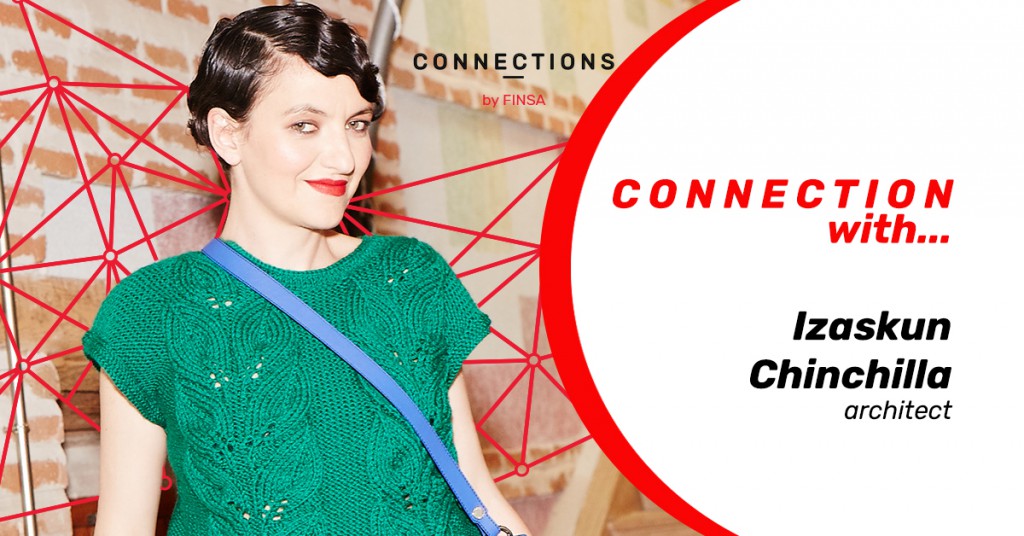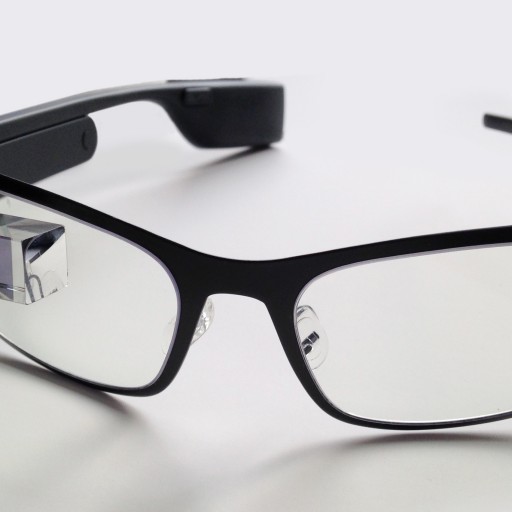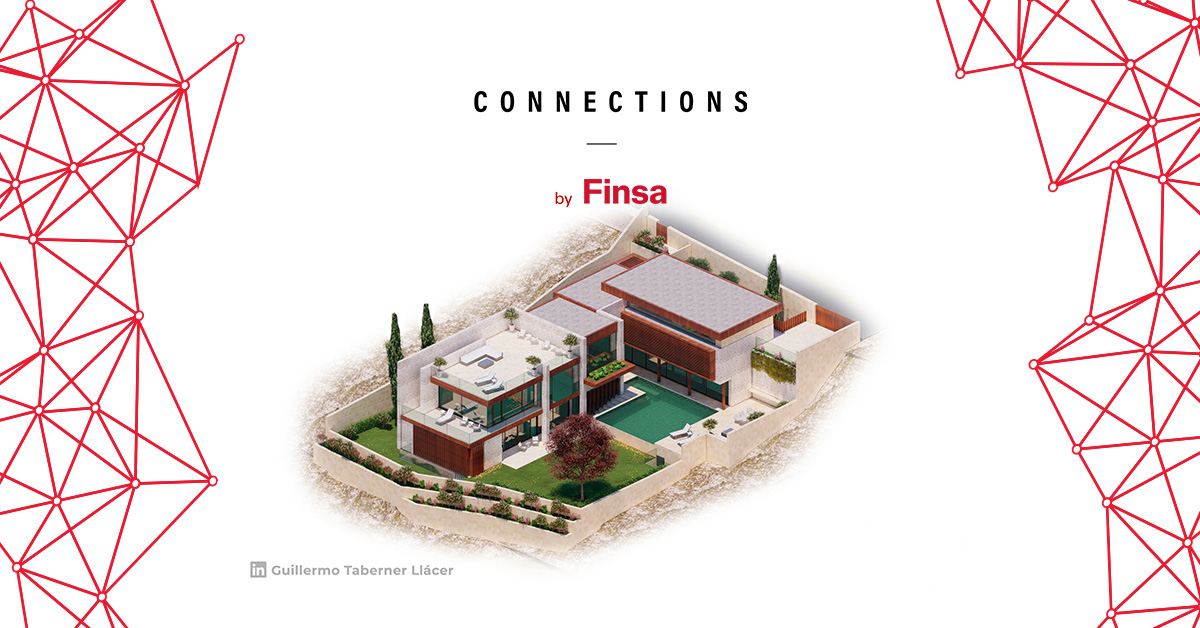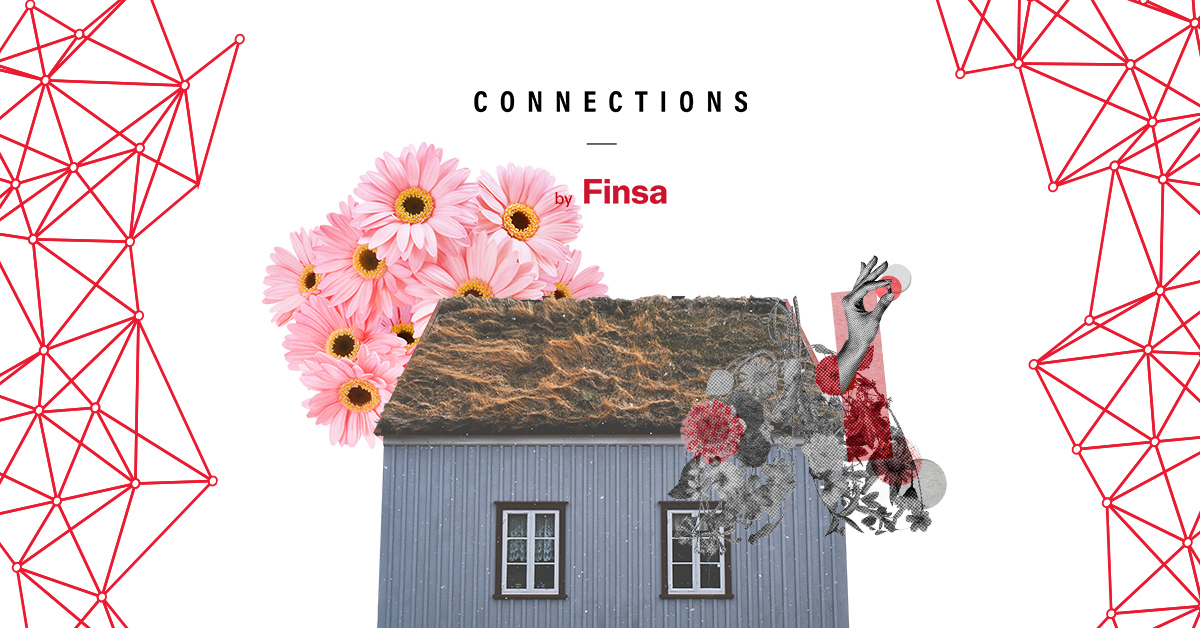Izaskun Chinchilla is one of the most important voices in the field of inclusive urban design. The architect recently published a book called The Caring City in which she discusses a design model that puts people at the centre of every project right from the beginning. Here’s an in-depth interview with Chinchilla – part of our CONNECTION WITH… series – that will help you get to know her more creative side.

Do you think there is more awareness nowadays about inclusive urban design?
I’ll tell you something interesting. During the book signing events for The Caring City, many people that had nothing to do with architecture came up to me and made suggestions about how their cities should be designed. It was an amazing sense of empowerment, demystifying the utopian idea that we don’t have the ability to act [and demonstrating that] actually, yes, we can make the streets about something more than just commercialisation.
Think about the fact that, in public spaces, there are just as many ninety-year-olds as there are two-year-olds, and that disability can affect any one of us at any time of life because of potential illness or injury. A city needs to be designed with everyone in mind, not just for the stereotypical Caucasian male that commutes to work.
I would also say that the people in charge are getting very clear opinions from the general public about what works and what doesn’t. We have to take advantage of this feedback to create spaces that we truly need.
When we talk about inclusive architecture, we are also talking about accessibility. What do you think about this concept in public spaces?
Firstly, we need to stop thinking associating accessibility [only] with people with a disability. People with a ‘defect’ don’t exist. I prefer to think about physical and cognitive characteristics: for example, sometimes people get a bad night’s sleep [and this will impact how they navigate the city], or somebody doesn’t speak the language, or somebody uses the public transport system for the very first time. Intuitive elements make the city a much better place for everyone.
As I said earlier, context helps you adapt [or not adapt] to your surroundings. The problem is that many spaces aren’t designed for everyone to use. We should think about places that don’t exclude vulnerability or diversity.
Are we recovering our sensory skills after getting through the worst of the pandemic?
I would say yes, and that we have biophilia to thank for much of that, because we are realising that certain aspects of human perception are improved thanks to elements that get us back to nature. It’s been shown that we prefer spaces that include organic elements, such as timber or wicker, that the sound of water decreases our stress levels, and that natural lighting has a huge impact on our concentration.
These sensory skills (summed up in biophilic design) prioritise the person that is going to enjoy the space over the space itself. Historically, we’ve paid too much attention to technical aspects -to the building-, and not enough to the user. Design is supposed to serve the people.
Ver esta publicación en Instagram
You are a strong believer in including people’s experience in architecture in everything from curriculums to first drafts.
Yes, because I see spaces being designed for the majority, not for everyone. I understand the extraordinary diversity of our reality (e.g., children walking to and from home alone for the first time, elderly people with dementia etc.), but that’s why we need a wide range of the future users to participate [in the design of spaces]. This leads me to my idea of changing the criteria for project selection: efficiency and user satisfaction should be an important factor.
You’ve also spoken to us about beauty and aesthetics being a right. Has the concept of beauty changed over the last few years?
Aesthetics have changed over history and with social evolution, adapting to the times. We are leaning towards the ‘natural’ in reaction to the luxury style that makes us slaves to a space [because the latter requires] excessive control over each and every element. I think we have finally learned to move past artifice, to appreciate incomplete designs in which the people that enjoy a building are the same people that finish the project by living in it and using it.
Which direction would you like to take in your work as an architect?
Right now, the work of the studio is divided into three areas: a laboratory that allows us to do something more experimental, with a focus on circularity and recyclability; public projects, with a focus on collectives and social usefulness; and private projects, such as homes, co-working spaces, and offices, where we put environmental measures into practice.
I’m very interested in the study of post-occupational conditions and making sure that the people we design spaces for are satisfied. We want this factor to provide added value to our projects, even more so than other aspects such as speed or inexpensiveness. At the end of the day, good design does many things, including bringing identity to places that didn’t have any, reducing carbon footprints, and creating commercial opportunities. We would love to put this into practice in projects that will have an even bigger impact so that we can evaluate it much more thoroughly.
What are some of the challenges facing architecture in 2022?
I would say there are three main ones: climate change, including energy justice and participation of the people; aligning architecture with social aspirations i.e., reconnecting with the reason that we create spaces to begin with; and improving communication between architecture and society so that it can be more easily understood.
Ver esta publicación en Instagram
What inspires you?
Nature. It shows us how to use colour in architecture, has an impact on how we work, and even influences landscape photography. At the studio, we analysed poppy fields and how they are planted in Castilla to determine how we should start a project.
I’m also inspired by artisanal objects that are not in museums, but that very well could be. These objects are usually created by women but haven’t received a lot of attention because they were never highlighted in an intentional way. Two examples that come to mind are embroidery and food presentation. These activities are linked to the feminine and, when carefully examined, they are another source of inspiration that does away with the idea that the most important things in history are wars and conquests.
You mentioned that nature is a great stimulator of creativity. It’s also the basis for the CONNECTIVE NATURE by FINSA exhibition that can be seen at Madrid Design Festival 22 until March 13. How did the concept for this exhibition come about?
The idea was developed during the most difficult period of the pandemic, with an awareness about the need we had to reconnect, to smile again. It happened around the same time as The Caring City was published, in which I discuss our right to fresh air, biodiversity, and improved mobility models.
The exhibition is a kind of a reaction to all of that, drawing attention to the need for self-care, because I see that there is a lot of short-term memory loss and that, very quickly, we want to go back to “what it was like before”. COVID could have been a great reason to come up with more innovative and sustainable models, and that’s what I want to get back to, the fight against that immobility. That’s why CONNECTIVE NATURE by FINSA invites you to touch, think, smile, and to take a moment to heal, to reconnect with nature and others.
At the same time, we’ve turned the technological component into a way to multiply the shared experience by encouraging those who visit the installation to publish their journey through it on social media using various hashtags.




